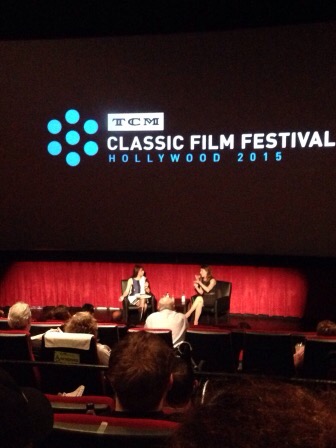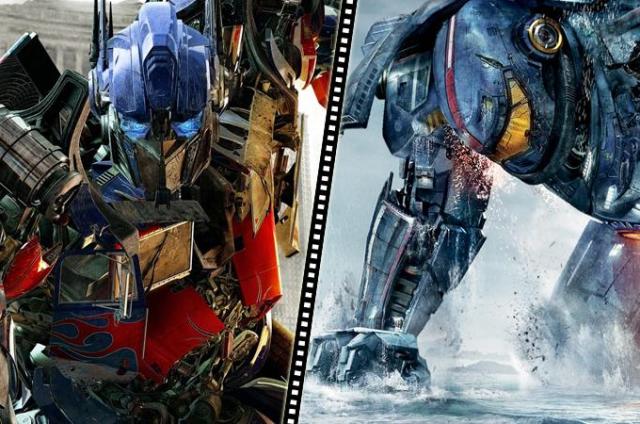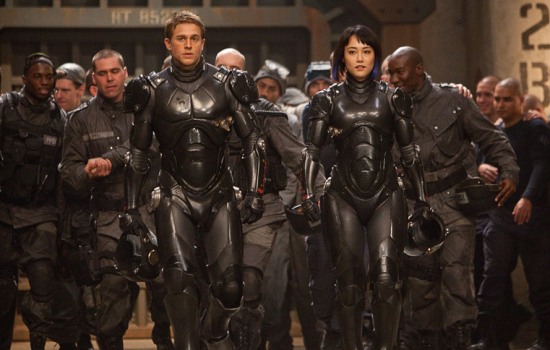Amazing how the summer movie season announces itself very strongly around these last few weeks of Spring. Maybe it’s just the relatively quiet spring season, when Hollywood usually unloads all of their less interesting fare, but at the same time we’re now talking even more about the coming attractions of next season than what is currently playing. Recent weeks have brought a lot of hype around movie trailers for next year’s Batman v. Superman, or this winter’s Star Wars Episode VII, and yet no attention is drawn in social media or the press towards movies now in theaters. There’s no complaint from me on this, however, especially when what’s playing in theaters now is Paul Blart 2. But, that long dry spell of Spring is almost over and the Summer season once again brings us the movies we’ve eagerly waited all year for; and in some cases decades. Based off of the recent trend we’ve seen in Hollywood these last couple years, it’s another super hero heavy line-up once again. Marvel dominates this summer with three separate entries, including one from their marquee Avengers franchise. But unlike previous years, we’re going to see fewer remakes and more reboots of franchises, with some long dormant names making their returns for a whole new generation of audiences; even with some of their key players also returning. And naturally with another big movie season about to start, it is also time for me to give all of you my thoughts and predictions on some of the big movies coming out in the months ahead.
One thing that does stick out to me already, after looking over the calander for this summer season, is just how front loaded it is. The Summer of 2015 is going to start off strong with probably the biggest draws all coming out within the first weeks of May. There’s no indication this year that we’ll see a situation like we had in 2014, where the summer’s biggest money-maker opened in August (Marvel’s Guardians of the Galaxy). Some late summer films could surprise, but my guess is that the bigger ones will be the earliest releases this year. Like my previous previews, I will be looking at some of the most anticipated movies this season and tell you which ones I believe will be the absolute must sees, the ones that have me worried and the ones that are worth skipping altogether. Keep in mind, these are solely examined by how I’ve judged them based on their potential and the effectiveness of their marketing. I’m never 100% accurate; I predicted last year that Edge of Tomorrow was going to be worth skipping, and then it ended up on my Top 10 list by year’s end. Any of these movies could surprise. It’s solely my own opinion, so take these perspectives as you will. My hope is that you the reader will get a good sense about what to look forward to in the weeks ahead. And so now, let’s start this off with the good stuff.
MUST SEES:
TOMORROWLAND (May 22)
For many people, I’m sure the Marvel films will be the ones that draws the most attention, as well as the highest grosses. But for me, this is the movie that I’m the most excited about this summer. Super hero movies are worth getting excited about; don’t get me wrong. But this movie just looks like something new entirely, and that I find exciting. Deriving itself from elements of The Walt Disney Company’s long history of collaborating with some of the best and brightest in 20th century scientific research and engineering, Tomorrowland seems to be an interesting and fresh concept that we have not yet seen brought to life on the big screen. The movie obviously looks to be inspired by the section of the same name found in Disneyland parks around the world, but at the same time, it doesn’t appear to be a commercial for the theme park either. What director Brad Bird appears to be doing with this story is use the place “Tomorrowland” as an embodiment of the power of human ingenuity and scientific wonder, basically showcasing a magical place based around the promise and potential of the future, while also using this as a setting for a captivating sci-fi adventure. It’s very much like Alice in Wonderland (1951) meets 2001: A Space Odyssey (1968), and in a good way. Brad Bird also has a strong track record going, with films like The Incredibles (2004) and Mission:Impossible 4 (2011) under his belt, so my hopes are very high for this one. Other films will be crowd-pleasers, but this could be the one that really transports the audience to another world this summer.
AVENGERS: AGE OF ULTRON (May1)
Of course you can’t talk about this summer season without talking about The Avengers. The first film was a phenomenon when it premiered in 2012, quickly becoming one of the highest grossing films of all time. This movie looks to do just about the same, but time will tell if it can reach the high bar set by it’s predecessor. Regardless of whether or not it reaches this goal, there’s no doubt that this will be one of the summer’s biggest movies. What I hope more than anything is that it retains much of the entertainment value that the first movie had. This movie marks the end of Phase Two of Marvel’s master plan for its cinematic universe and the beginning of Phase Three. So far, the big gamble has paid off incredibly well for Marvel and parent company Disney, with only one stumbling block (2013’s Iron Man 3) and a ton of increasingly great standalone features; especially last year’s Guardians of the Galaxy. The Avengers series makes a great benchmark for each of the different phases, and my hope is that Age of Ultron continues the trend. I have a lot of confidence in this film, because the thing that Marvel does best is to build these movies around the characters, and it makes the films all the more interesting when there’s more of them involved. The returning team still looks solid in this trailer, but it’s the new characters that intrigue me most, including the villain Ultron; with a menacing voice supplied by James Spader. Director Joss Whedon proved a lot of naysayers wrong with the success of the first movie, and it looks like he’s amping things up in a good way with this follow up; expanding the universe without loosing the characteristics that make it work, which is what all the best sequels should do.
MISSION: IMPOSSIBLE – ROGUE NATION (July 31)
Back in 2011, the Mission: Impossible franchise breathed new life into a waning franchise with it’s fourth film Ghost Protocol, which is arguably the best movie in the series to date. With that film, Mission: Impossible finally found its character, and can now distinguish itself as a franchise from all the other spy thrillers out there. Not only that, but Ghost Protocol also brought an impressive sense of scale that had been missing in the series before, such as in the remarkable scene where franchise star Tom Cruise scales the exterior of the Burj Khalifa in Dubai, the world’s tallest building. So, how does a sequel top an amazing scene like that; by having Cruise actually hanging onto the exterior of a plane while it takes off, of course. That’s what excites me about this new Mission: Impossible movie; it’s using what worked in the last film and takes it to the next level. I also love that they are retaining the same team from Ghost Protocol, while also giving more screen time to series regular Ving Rhames, who was absent for the most part the last time out. Cruise once again looks like he’s in top form here, and the fact that he still does most of his own stunt work is mind-boggling, especially when you see what’s coming up in this new film. Ghost Protocol’s director Brad Bird was obviously busy working on Tomorrowland while this was being made, but his replacement here is writer and director Christopher McQuarrie (The Usual Suspects) who’s more than capable of handling the job. This movie also provides a great fix for audiences in the spy genre this year in between Kingsmen and the next James Bond flick.
MAD MAX: FURY ROAD (May 15)
Some movies sell you on just their potential alone. This movie however is one that caught my eye purely by how much I like this trailer. This is how you sell a movie. The visuals mixed with the sweeping, operatic music perfectly displays the over-the-top nature that I’m sure is going to characterize this movie. The Mad Max franchise is another one of those that has sat long dormant for too long, and this movie trailer really helps to proclaim it’s return in a big way. While Fury Road may not return the series’ original star, Mel Gibson, nor most of the original cast, it does mark the welcome return of it’s creator, Austrailian filmmaker George Miller. And given the look of this movie from the ad, Miller intends to take the series to the next level, giving it scale unseen before. Actor Tom Hardy is more than capable enough to fill Gibson’s shoes in the iconic role, and he seems to have good company from the supporting cast, which includes an almost unrecognizable Charlize Theron. What I hope is that the movie lives up to this trailer. Sometimes a film company can run the risk of selling a movie too well, and having it’s trailer be better than the movie itself. The same risk could potentially happen here too, but my hope is that the movie will still have enough surprises in store for us. Despite what happens, I still look at this particular trailer as one of the best in recent years, and that alone helps to peak my interest in this movie.
INSIDE OUT (June 19)
One of the more reliable names during the summer season has been Pixar Studios. For much of the last decade, their movies have not only clicked at the box office, but have been critically acclaimed as well. However, recently the studio has succumbed to some of the pitfalls of such an extended win streak. This has included underperforming sequels ( 2011’s Cars 2 and 2013’s Monsters University) and lackluster stories (2012’s Brave). Not only that, but tougher competition has emerged recently with animated films from other companies rising up to the high Pixar standard. Even parent company Disney’s own animation studio has seen a resurgence with megahits like Frozen (2013). So, at this point in time, Pixar needs something fresh and bold to help gain back some of their edge, and this movie looks like the perfect project to do just that. Directed by Pete Doctor, who’s last film Up (2009) is considered one of Pixar’s best, delivers a unique concept here and does so with a delightful sense of humor that has become a Pixar trademark. Embodying emotions as individuals living in our minds is a great concept, and I’m intrigued to see how the story works around this idea. I already like the looks of the characters, and how their designs match the emotions they represent (plus, there’s no more perfect casting than comedian Lewis Black as Anger). Pixar rarely lets us down, and hopefully Inside Out is yet another gem in their animation crown.
MOVIES THAT HAVE ME WORRIED:
JURASSIC WORLD (June 12)
For a lot of people, this is the most anticipated movie of the year. Jurassic Park (1993) is an all time classic, and the name carries a lot of weight with it. And from the look of the trailer, it appears that the filmmakers are definitely playing on that sense of nostalgia that audiences have for the original. It certainly does a good job of recreating the look of the series, only with a grander scale and better CGI effects. Also, the idea of having a park open to the public in this movie, something that Dr. John Hammond (the late great Richard Attenbourough) dreamed of in the original but couldn’t make happen, is a cool idea to explore in this sequel. The reason why I’m not as enthusiastic about this movie as other people are is because I’ve been burned by this franchise before. No series has fallen harder in recent years than Jurassic Park has. The original by Steven Spielberg is nearly pitch perfect and still holds up today. But, it was followed up by two really awful sequels that tarnished the series; The Lost World in 1997 and Jurassic Park III in 2001. My hope is that Jurassic World can help restore some of the magic that this franchise once had, but nothing I’ve seen in this trailer has really convinced me of that. Even still, I’m sure it will still be a big hit. Having Guardians of the Galaxy’s Chris Pratt in the lead certainly is a plus, and the image of him on a motorcycle flanked by raptors is pretty awesome. But, still, I’m not getting my hopes up too high with this one.
ANT-MAN (July 17)
Marvel Studios’ track record has been incredibly strong, especially with the introduction of new characters into their cinematic universe. You would think that the first of their Phase Three films would likewise be a welcome addition, but unfortunately Ant-Man comes to theaters this summer with a lot of doubt clouding its arrival. This is primarily due to it’s troubles in development, and not from the strength of the character himself. During pre-production, Marvel had a falling out with the film’s original writer and director Edgar Wright (Shaun of the Dead), who left the project over unresolvable creative differences. Most of the time, a filmmaker shake-up doesn’t bode well for the finished film, especially when his replacement (director Peyton Reed) seems more like a hired hand rather than someone with a bold vision. But, even with the troubles behind the camera, the one thing that could still bode well for this movie is the cast. All of the characters are still played by Wright’s choices in casting, and it appears that they’re trying to make the best out of their roles. I also like the way they visualize the action scenes in this trailer, making Ant-Man’s size changing powers understandable to the average viewer. But even if it looks amazing, my worry is that too much was lost in the shuffling of filmmakers and that most people are going to end up wondering what might have been if Edgar Wright was allowed to complete his vision for the character.
FANTASTIC FOUR (August 7)
Let’s be clear, it’s not too difficult to improve upon the Fantastic Four franchise. The 2005 original and it’s 2007 sequel Rise of the Silver Surfer are both pretty awful. Also, rebooting the series with a new cast of actors is absolutely necessary, especially when the original Human Torch (Chris Evans) has long abandoned the series in order to don the Stars and Stripes as Captain America instead. The one thing that keeps me from being too excited about this version, however, is that it’s a movie based on a Marvel property not made by Marvel itself. The track record for Marvel films set outside of it’s cinematic universe has been shaky; just look at how Spider-Man imploded over at Sony. Thankfully Fantastic Four is held by 20th Century Fox, which has treated their Marvel licensed characters with a bit more respect and care; especially with last year’s exceptional X-Men: Days of Future Past. But, even still, the movie is going to be a tough sell, considering how poorly the franchise has been handled up to now. Also, some of the casting choices here seem a little odd (the guy who played Billy Elliott is now playing The Thing!?). Though, after watching the brilliant Whiplash from last year, I now have a lot of confidence in actor Miles Teller playing the role of Reed Richards, aka Mr. Fantastic. Considering what’s come before, you can only go up after hitting rock bottom.
TERMINATOR: GENYSIS (July 1)
If there has ever been a franchise that has been stretched to its limits, constantly being rebooted again and again, it would be the Terminator franchise. This new entry once again tackles the concept of using time travel to stop a war from happening, but this time around, the movie actually takes the series back to its roots; set during the events of the original 1984 Terminator. This to me seems like a bad way to go with the franchise. The best thing that a series can do is to move foward and build upon what’s been there before, which is what the 1992 sequel T2: Judgment Day did so brilliantly. This film looks to be moving the franchise backwards by trying to reimagine the past, which to me seems to be exploiting the Terminator brand purely for nostalgia rather than building upon it’s grander vision. Also, wiping the events of the original out of the timeline just so this plot can happen seems like a bad idea. The only saving grace this sequel has overall is that it marks the return of Arnold Schwarzenegger to the series. And let’s face it, without Arnold, there would’ve been no Terminator franchise to begin with. So, while the premise behind Terminator: Genysis seems a little dubious, it is nice to see the “Governator” live up to his promise of being back.
MOVIES TO SKIP:
PIXELS (July 24)
On the surface, this movie looks to have an interesting premise, where video game characters are used as a weapon by an invading alien race, and the nifty visual effects seem impressive as well. But let’s keep in mind, this is an Adam Sandler movie we’re talking about, and this ain’t Wreck-it Ralph (2012). Even when given a bigger budget and broader premise to work with, Sandler’s Happy Madison Productions always seems to disappoint (Bedtime Stories and Click, for example). And this trailer only tells me that we’re going to get more of the same play-it-safe sophomoric humor from Sandler and Co. What hurts even more is that it looks like he’s dragged a quality actor like Peter Dinklege into the film as well. Now, I shouldn’t be the one to tell Mr. Dinklege which movies he can and cannot do, but seriously Peter, you are much better than this. Spare youself the pain and watch Game of Thrones instead to see Peter Dinklege at his best; or watch Punch Drunk Love (2002) to see Adam Sandler when he actually gives a damn.
SAN ANDREAS (May 29)
The disaster movie genre is one that seems to have exploited all the potential that it has and is no longer able to shock and amaze audiences. This appears to be the case as well with San Andreas. Based on this trailer, I see this movie as less of a captivating story and more of a showcase for visual effects, which themselves look generic and uninteresting. Basically San Andreas looks like leftovers from a Roland Emmerich movie, and even a full helping of Roland Emmerich can be an unsatisfying meal. The only thing that could potentially save this film could be a charismatic performance from Dwayne “The Rock” Johnson, but even he looks like he’s phoning it in based on what’s shown in the trailer. The disaster genre needs fresh new ideas, and sadly San Andreas just seems to be more of the same.
POLTERGEIST (May 22)
Remakes have dominated the filmmaking landscape for several years now, and very few of them have actually been any good. In fact, not a single one has ever managed to top it’s predecessor. This summer, we get a remake of what is arguably one of the best and most iconic horror movies of the last 40 years. The original Tobe Hooper directed and Steven Spielberg produced film is a classic and still holds up today, which makes this remake all the more unnecessary. And by the look of the trailer, this remake is doing exactly what all bad horror remakes have done, which is remove all of the great creepy atmosphere from the original and replace it with cheap jump scares. My hope is that no one buys into this cash-in of a remake and instead I hope audiences seek out the original classic, which I guarantee you is far scarier than anything that is going to appear in this version.
So, this is my look at the coming attractions for the Summer of 2015. Hopefully there will be a lot of worthwhile entertainment found in the biggest releases of the Summer and hopefully some genuine surprises as well. But, even though there are the big tent pole releases dominating the cinemas in the weeks ahead, there’s also a good helping of counter-programming out there from independent cinema as well. Other worthwhile upcoming movies like Cameron Crowe’s Aloha and the Ian McKellan headlined Mr. Holmes also open quietly this Summer amongst the big dogs. No matter what, there will always be something worth watching during this summer season, because Hollywood puts so much value into these next couple months. Naturally, the superhero genre will dominate the box office like it has in years past, but whoever sits on the throne by season’s end is certainly up in the air. I for one will keep up with all the big releases of the year, with reviews and perspectives coming like they do every week. Hopefully, this preview has helped you plot out your “to watch” list for the summer and it will be interesting to see how well these movies match our expectations, good or bad.

































